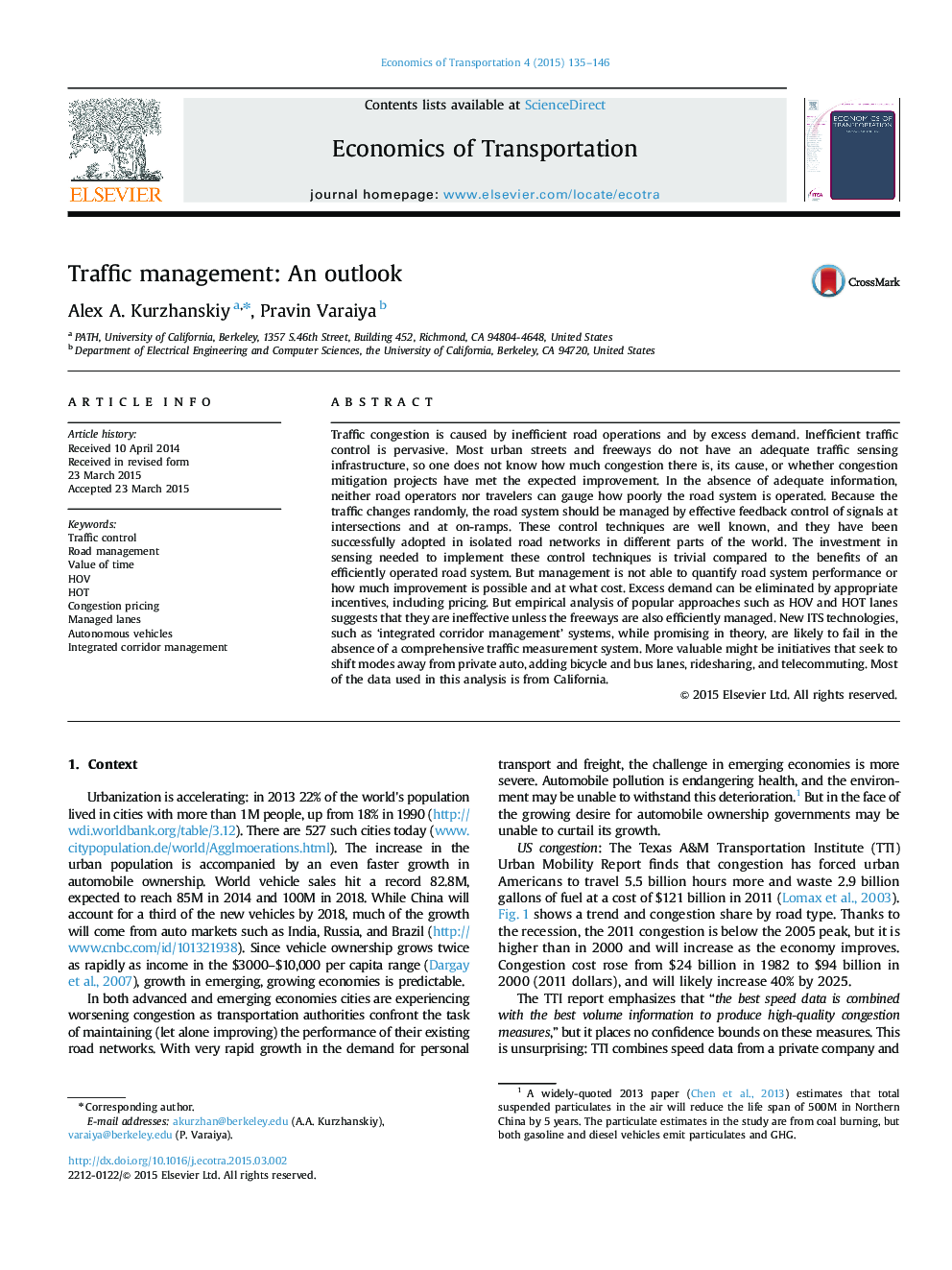| کد مقاله | کد نشریه | سال انتشار | مقاله انگلیسی | نسخه تمام متن |
|---|---|---|---|---|
| 5062921 | 1476653 | 2015 | 12 صفحه PDF | دانلود رایگان |
- Traffic congestion is caused by (1) inefficient traffic control, and/or (2) excess demand.
- Defining the cause of congestion is a challenge.
- Inefficient traffic control is the primary reason for congestion in the U.S.
- Making traffic control efficient relies on proper detection infrastructure.
- Trying to manage demand before fixing traffic control leads to underutilization of available road network.
Traffic congestion is caused by inefficient road operations and by excess demand. Inefficient traffic control is pervasive. Most urban streets and freeways do not have an adequate traffic sensing infrastructure, so one does not know how much congestion there is, its cause, or whether congestion mitigation projects have met the expected improvement. In the absence of adequate information, neither road operators nor travelers can gauge how poorly the road system is operated. Because the traffic changes randomly, the road system should be managed by effective feedback control of signals at intersections and at on-ramps. These control techniques are well known, and they have been successfully adopted in isolated road networks in different parts of the world. The investment in sensing needed to implement these control techniques is trivial compared to the benefits of an efficiently operated road system. But management is not able to quantify road system performance or how much improvement is possible and at what cost. Excess demand can be eliminated by appropriate incentives, including pricing. But empirical analysis of popular approaches such as HOV and HOT lanes suggests that they are ineffective unless the freeways are also efficiently managed. New ITS technologies, such as 'integrated corridor management' systems, while promising in theory, are likely to fail in the absence of a comprehensive traffic measurement system. More valuable might be initiatives that seek to shift modes away from private auto, adding bicycle and bus lanes, ridesharing, and telecommuting. Most of the data used in this analysis is from California.
Journal: Economics of Transportation - Volume 4, Issue 3, September 2015, Pages 135-146
